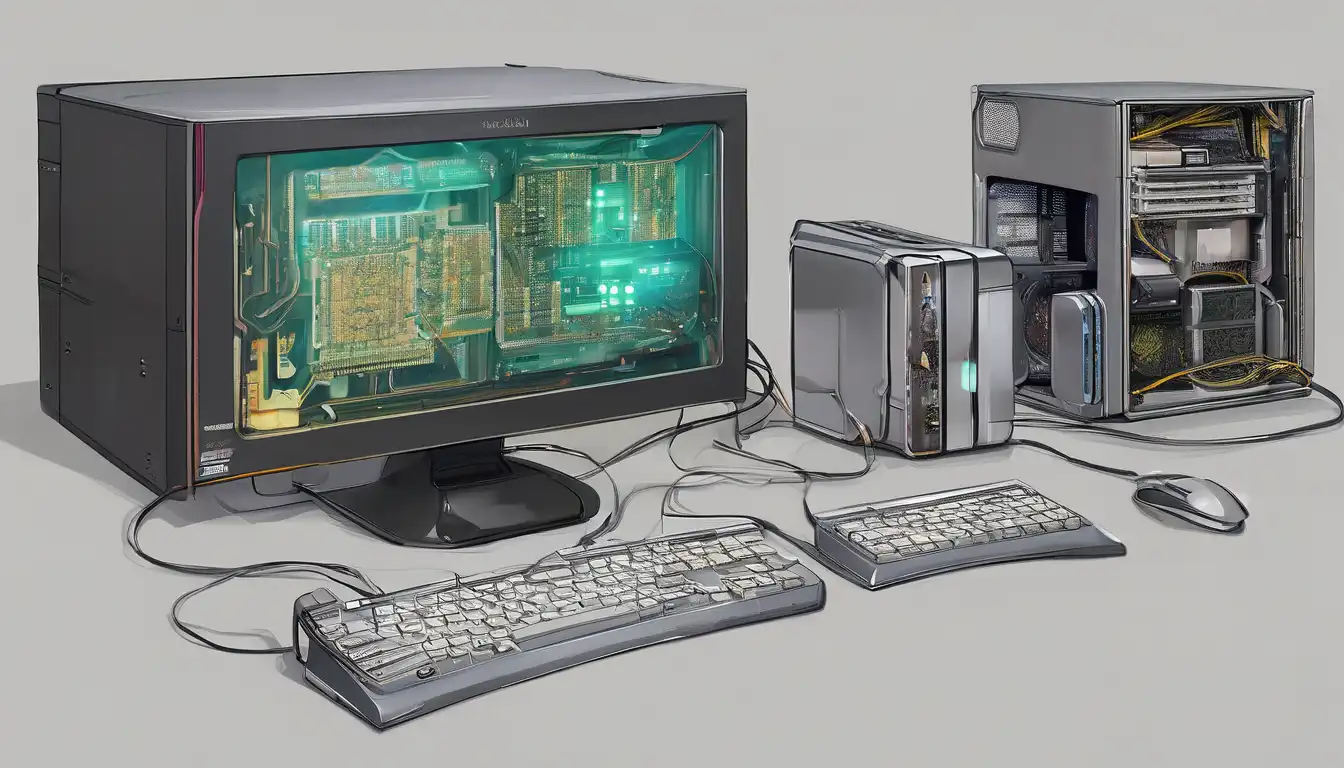Revolutionary Advances in Computer Hardware Technology
The landscape of computer hardware technology is undergoing unprecedented transformation, with innovations emerging at an accelerated pace. From quantum computing breakthroughs to AI-optimized processors, the latest developments are reshaping how we interact with technology and pushing the boundaries of computational power. These advancements not only enhance performance but also address critical challenges in energy efficiency, thermal management, and scalability.
Next-Generation Processor Architectures
The processor market has witnessed remarkable evolution with the introduction of 3D stacking technology and chiplet designs. Major manufacturers like Intel, AMD, and ARM are leveraging advanced packaging techniques to overcome the limitations of traditional silicon scaling. The shift towards heterogeneous computing architectures allows for specialized processing units optimized for specific tasks, significantly improving overall system efficiency.
Recent innovations include processors with integrated AI accelerators that can handle machine learning workloads directly on the chip. This eliminates the need for separate AI processing units and reduces latency while improving power efficiency. The adoption of RISC-V architecture is also gaining momentum, offering open-source alternatives to proprietary processor designs and enabling greater customization for specific applications.
Memory Technology Breakthroughs
Memory technology has seen substantial improvements with the development of DDR5 RAM and LPDDR5X for mobile devices. These new standards offer significantly higher bandwidth and lower power consumption compared to previous generations. The integration of HBM (High Bandwidth Memory) directly onto processor packages has revolutionized memory access speeds, particularly benefiting high-performance computing and graphics applications.
Emerging non-volatile memory technologies like MRAM (Magnetoresistive RAM) and ReRAM (Resistive RAM) promise to bridge the gap between traditional RAM and storage devices. These technologies offer the speed of RAM with the persistence of storage, potentially eliminating the need for separate memory hierarchies in future computing systems.
Storage Solutions Evolution
The storage sector continues to innovate with PCIe 5.0 SSDs delivering unprecedented read/write speeds exceeding 14,000 MB/s. The adoption of QLC (Quad-Level Cell) and PLC (Penta-Level Cell) NAND flash technology has increased storage densities while reducing costs per gigabyte. These advancements make high-capacity SSDs more accessible to mainstream consumers and enterprise users alike.
Computational storage represents another significant innovation, where storage devices incorporate processing capabilities to offload compute tasks from the main CPU. This approach reduces data movement and improves overall system efficiency, particularly for data-intensive applications like big data analytics and artificial intelligence workloads.
Graphics and Display Technology
Graphics processing units have evolved beyond traditional rendering tasks to become essential components for AI training, scientific computing, and real-time ray tracing. The latest GPU architectures feature dedicated tensor cores and ray tracing accelerators that deliver photorealistic graphics and accelerate machine learning applications. Real-time path tracing technology is setting new standards for visual fidelity in gaming and professional visualization.
Display technology has kept pace with hardware advancements, with microLED displays offering superior brightness, contrast ratios, and energy efficiency compared to traditional LCD and OLED technologies. The integration of high-refresh-rate displays with adaptive sync technologies ensures smooth visual experiences across gaming, content creation, and professional applications.
Cooling and Power Management Innovations
As component densities increase, thermal management has become increasingly critical. Advanced cooling solutions including vapor chamber technology, liquid cooling systems, and phase-change materials are essential for maintaining optimal operating temperatures. These innovations enable higher sustained performance while extending component lifespan and reliability.
Power delivery systems have also seen significant improvements with the adoption of gallium nitride (GaN) and silicon carbide (SiC) semiconductors. These materials offer higher efficiency and power density compared to traditional silicon-based components, enabling more compact and energy-efficient power supplies for both consumer and enterprise systems.
Connectivity and Peripheral Advancements
The latest connectivity standards including USB4, Thunderbolt 4, and Wi-Fi 7 are transforming how devices communicate and transfer data. These technologies offer multi-gigabit speeds, improved power delivery capabilities, and enhanced security features. The integration of these standards into modern motherboards and devices ensures seamless connectivity across ecosystems.
Peripheral technology has evolved with the introduction of haptic feedback keyboards, high-precision gaming mice with customizable weights, and professional-grade monitors with color accuracy exceeding 99% Adobe RGB coverage. These advancements enhance user experience across gaming, content creation, and professional applications.
Quantum Computing and Neuromorphic Hardware
While still in early stages, quantum computing hardware represents the frontier of computational technology. Recent developments in qubit stability and error correction are bringing practical quantum computing closer to reality. Companies like IBM, Google, and D-Wave are making significant progress in developing scalable quantum processors that could revolutionize fields from cryptography to drug discovery.
Neuromorphic computing hardware, inspired by the human brain's neural architecture, offers promising alternatives to traditional von Neumann architectures. These systems excel at pattern recognition and sensory processing tasks while consuming significantly less power than conventional processors. The development of memristor-based neuromorphic chips could enable more efficient AI systems and edge computing applications.
Sustainability and Environmental Considerations
The hardware industry is increasingly focusing on sustainability through improved energy efficiency, recyclable materials, and extended product lifecycles. Manufacturers are adopting more environmentally friendly production processes and designing components for easier disassembly and recycling. The shift towards modular and upgradeable systems reduces electronic waste and extends the useful life of computing devices.
Energy-efficient designs are becoming standard across all hardware categories, with processors and graphics cards achieving higher performance per watt than ever before. These improvements not only reduce operational costs but also contribute to lower carbon footprints for both individual users and large-scale data centers.
Future Outlook and Emerging Trends
The future of computer hardware technology points toward increased integration, specialization, and intelligence. We can expect to see further convergence of CPU, GPU, and AI accelerator functionalities into unified processing architectures. The development of photonic computing and optical interconnects promises to overcome current limitations in electrical signal transmission, potentially revolutionizing data center architectures.
As hardware continues to evolve, the focus will remain on delivering more computational power while improving energy efficiency, reliability, and accessibility. These innovations will enable new applications in artificial intelligence, virtual reality, scientific research, and everyday computing, shaping the technological landscape for years to come.
